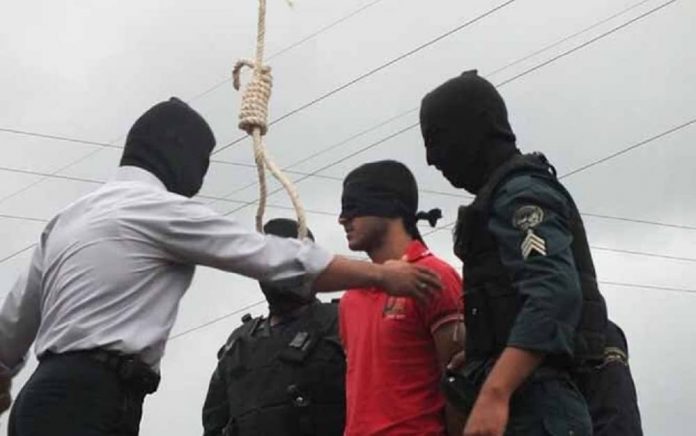Iran’s Execution Rate Likely to Surge Again as Crackdown on Dissent Persists

Iran-executions
FILE PHOTO
Written by
Mahmoud Hakamian
The first three months of 2024 puts Iran well on the way to retaining its status as the country with the world’s highest rate of executions per capita. In 2023, the country witnessed an eight-year high in executions, largely attributed to a surge associated with the regime’s crackdown on dissent following a nationwide uprising in 2022.
This surge resulted in over 870 executions in 2023, with several directly linked to defendants’ involvement in the previous year’s uprising. At least nine individuals were executed on charges such as “enmity against God” or “spreading corruption on Earth.” Dozens of similar death sentences are reportedly pending, raising concerns among activists that the regime may intend to implement them once international attention to Iran’s human rights abuses diminishes.
Following the October 7 attacks and the eruption of a significant conflict in the Middle East, which the clerical regime claimed ownership for and boasted about its ties with the involved aggressors, the regime has further escalated the rate of executions.
However, the crackdown extended far beyond state-sanctioned executions. According to the People’s Mojahedin Organization of Iran (PMOI/MEK), over 30,000 protesters were arrested between the onset of the 2022 uprising in mid-September and the year’s end. Iranian authorities indirectly acknowledged this estimate later, announcing that nearly the same number had been granted amnesty, although this assertion is subject to dispute.
Multiple political prisoners, predominantly in their twenties and thirties, who were reportedly released, were subsequently found dead with claims of suicide. Many of the victims’ families allege that they were subjected to severe torture or even poisoning.
The same phenomenon is evident in recent reports about relatives of persons killed during that uprising being arrested or re-arrested. On April 2, human rights activists highlighted the case of Saeed Farokhi Pour, who had been arrested the previous day at Behesht-e Zahra Cemetery after attending a memorial for his son Amir-Mehdi Farokhi Pour. By coincidence, that arrest coincided with a report from the Center for Human Rights in Iran detailing the prosecution of Mahsallah Karami, whose son Medhi Karami was hanged on January 7, 2023, for his participation in the uprising.
🧵New @amnesty research shows a horrifying surge in executions in Iran, with at least 853 people executed in 2023. In this thread, we will share some of our findings. Read the press release & research briefing here: https://t.co/qHB8Vs7yoHhttps://t.co/xKc2QaxOTe pic.twitter.com/SLqrCLozj4
— Amnesty Iran (@AmnestyIran) April 5, 2024
The elder Karami has been detained since August, facing charges of assembly and collusion against national security and propaganda against the state, and also stands accused of financial corruption on account of receiving compassionate donations to help support him and other families who are grieving losses and pursuing justice for the authorities who killed their loved ones.
Although there is no immediate indication that Karami faces a threat of execution, there are other means by which Iranian authorities have killed and continue to kill protesters and dissidents. On March 24, a 20-year-old woman named Sara Tabrizi was found dead in her father’s Tehran home, leading to speculation that she had committed suicide after being arrested the previous December, subjected to torture and threats, released, but then kept under severe pressure before being summoned back to the Intelligence Ministry on March 23.
The clerical regime has also escalated its pressure on former political prisoners, supporters of the Iranian Resistance, and individual dissenters who have been active in the past, as a means to intimidate the public.
As the end of Ramadan draws near, the regime seeks to conceal its post-election internal turmoil and the fallout from its regional conflicts. Therefore, the regime is expected to continue its pattern of high rates of executions, arbitrary arrests, and forced disappearances. History suggests that capital punishment under this regime is not about justice but rather a political tool.

